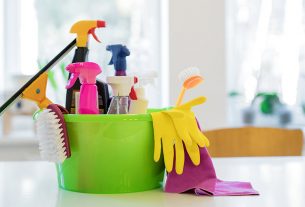New Delhi April 06, 2020: As the coronavirus continues to make the news, a host of untruths has surrounded the topic. In this special feature, we address some of these myths and conspiracies.
The novel coronavirus, now known as SARS-CoV-2, has spread from Wuhan, China, to every continent on Earth except Antarctica.
The World Health Organization (WHO) officially changed their classification of the situation from a public health emergency of international concern to a pandemic on March 11.
To date, the novel coronavirus — currently dubbed “severe acute respiratory syndrome coronavirus 2,” or SARS-CoV-2 for short — has been responsible for more than 245,000 infections globally, causing more than 10,000 deaths. In the U.S., the virus has affected 14,250 people and has so far caused 205 deaths.
As ever, when the word “pandemic” starts appearing in headlines, people become fearful, and with fear come misinformation and rumors.
Here, we will dissect some of the most common myths that are currently circulating on social media and beyond.
1. Spraying chlorine or alcohol on skin kills viruses in the body
Applying alcohol or chlorine to the body can cause harm, especially if it enters the eyes or mouth. Although people can use these chemicals to disinfect surfaces, they should not use them on skin. These products cannot kill viruses within the body.
2. Only older adults and young people are at risk
SARS-CoV-2, like other coronaviruses, can infect people of any age. However, older adults or individuals with preexisting health conditions, such as diabetes or asthma, are more likely to become severely ill.
3. Children cannot catch COVID-19
All age groups can become infected. Most cases, so far, have been in adults, children but are not immune. In fact, preliminary evidence shows that children are just as likely to become infected, but their symptoms tend to be less severe.
4. COVID-19 is just like the flu
SARS-CoV-2 causes illness that does, indeed, have flu-like symptoms, such as aches, fever, and cough. Similarly, both COVID-19 and flu can be mild, severe, or, in rare cases, fatal. Both can also lead to pneumonia.
However, the overall profile of COVID-19 is more serious. Estimates vary, but its mortality rate seems to be between about 1% and 3%.
5. Everyone with COVID-19 dies
This statement is untrue. As we have mentioned above, COVID-19 is only fatal for a small percentage of people.
In a recent report, the Chinese Center for Disease Control and Prevention concluded that 80.9% of COVID-19 cases were mild.
The WHO also report that around 80% of people will experience a relatively mild form of the disease, which will not require specialist treatment in a hospital.
Mild symptoms may include fever, cough, sore throat, tiredness, and shortness of breath.
6. Cats and dogs spread coronavirus
Currently, there is little evidence that SARS-CoV-2 can infect cats and dogs. However, in Hong Kong, a Pomeranian whose owner had COVID-19 became infected. The dog did not display any symptoms.
Scientists are debating the importance of this case to the epidemic. For instance, Prof. Jonathan Ball, Professor of Molecular Virology at the University of Nottingham in the United Kingdom, says: “We have to differentiate between real infection and just detecting the presence of the virus. I still think it’s questionable how relevant it is to the human outbreak, as most of the global outbreak has been driven by human-to-human transmission.”
7. Face masks protect against coronavirus
Healthcare workers use professional face masks, which fit tightly around the face, to protect them against infection. However, disposable face masks are unlikely to provide such protection.
As these masks do not fit neatly against the face, droplets can still enter the mouth and nose. Also, tiny viral particles can penetrate directly through the material.
However, if someone has a respiratory illness, wearing a mask can help protect others from becoming infected.
“There is very little evidence that wearing such masks protects the wearer from infection,” Dr. Ben Killingley, Consultant in Acute Medicine and Infectious Diseases at University College London Hospital in the U.K., explains.
“Furthermore, wearing masks can give a false sense of reassurance and might lead to other infection control practices being ignored, e.g., hand hygiene.”
The WHO recommend that people who are caring for someone with suspected COVID-19 should wear a mask. In these cases, wearing a mask is only effective if the individual regularly washes their hands with alcohol-based hand rub or soap and water.
Also, when using a mask, it is important to use it and dispose of it properly.
8. Hand dryers kill coronavirus
Hand dryers don’t kill coronavirus. The best way to protect yourself and others from the virus is to wash your hands with soap and water or an alcohol-based hand rub.
9. SARS-CoV-2 is just a mutated form of the common cold
Coronaviruses are a large family of viruses, all of which have spiky proteins on their surface. Some of these viruses use humans as their primary host and cause the common cold. Other coronaviruses, such as SARS-CoV-2, primarily infect animals.
Both Middle East respiratory syndrome (MERS) and severe acute respiratory syndrome (SARS) began in animals and passed into humans.
10. You have to be with someone for 10 minutes to catch the virus
The longer someone is with an infected person, the more likely they are to catch the virus, but it is still possible to catch it in less than 10 minutes.
11. Parcels from China can spread coronavirus
From previous research into similar coronaviruses, including those that cause SARS and MERS and are similar to SARS-CoV-2, scientists believe that the virus cannot survive on letters or packages for an extended time.
The CDC explain that “because of poor survivability of these coronaviruses on surfaces, there is likely very low risk of spread from products or packaging that are shipped over a period of days or weeks at ambient temperatures.”
12. Home remedies can cure and protect against COVID-19
No home remedies can protect against COVID-19, including vitamin C, essential oils, silver colloid, sesame oil, garlic, fish tank cleaner, burning sage, and sipping water every 15 minutes.
The best approach is to adopt a good handwashing regimen and to avoid places where there may be unwell people.
13. You can catch coronavirus from eating Chinese food in the U.S.
No, you cannot.
14. The virus will die off when temperatures rise in the spring
Some viruses, such as cold and flu viruses, do spread more easily in the colder months, but that does not mean that they stop entirely when conditions become milder. As it stands, scientists don’t know how temperature changes will influence the behavior of SARS-CoV-2.
15. The outbreak began because people ate bat soup
Although scientists are confident that the virus started in animals, there is no evidence that it came from soup of any kind.CORONAVIRUS NEWS Stay informed about COVID-19
What should we do?
The Centers for Disease Control and Prevention (CDC) recommend these simple measures to reduce the spread of SARS-CoV-2:
- avoid close contact with people who seem sick
- try not to touch your eyes, nose, or mouth
- tay at home if you are sick
- Sneeze into a tissue, then throw it in the trash
- If there are no tissues to hand, sneeze into the crook of your elbow
- Use standard cleaning sprays and wipes to disinfect frequently touched objects and surfaces
- Wash your hands with soap regularly for 20 seconds




